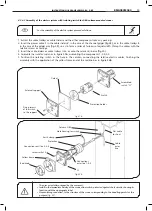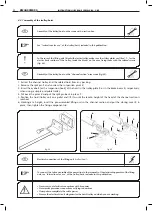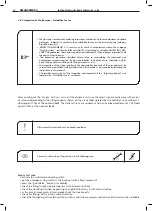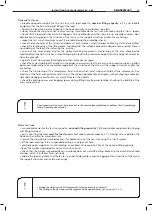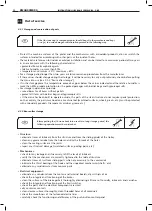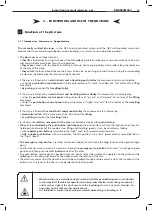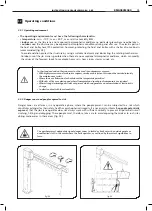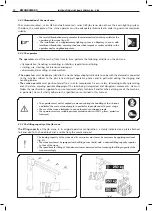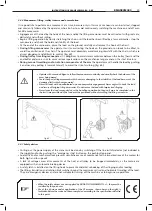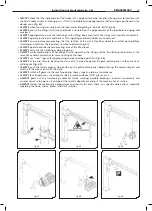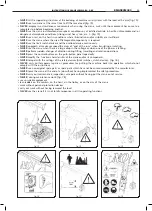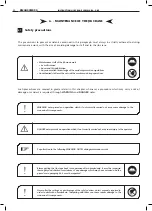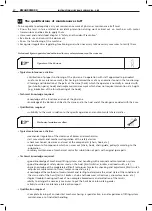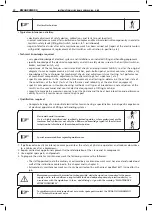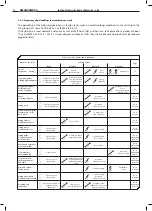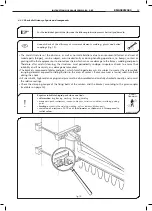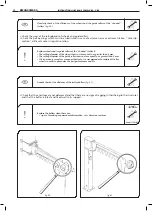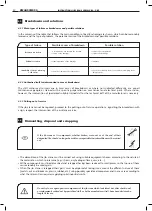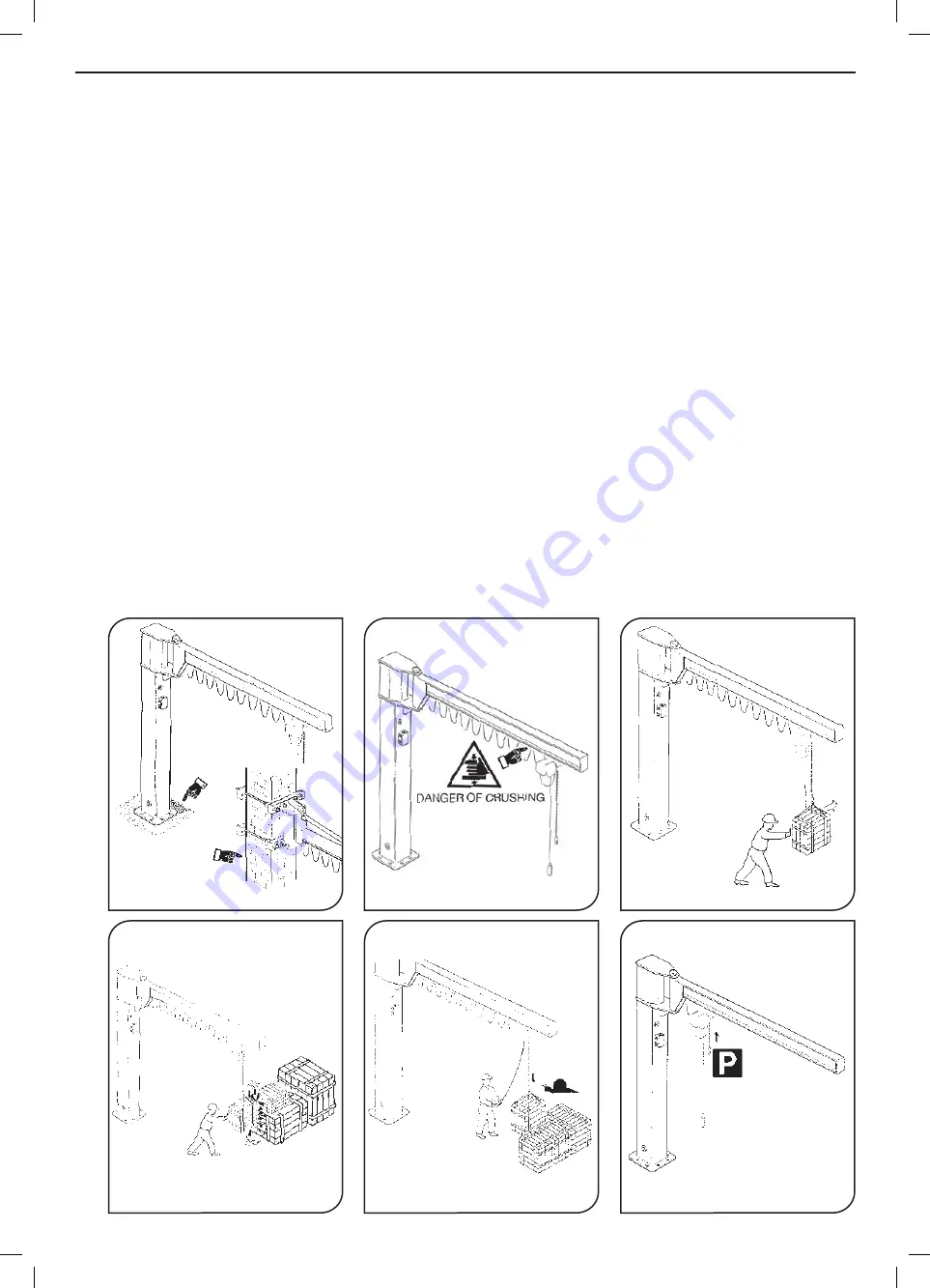
42
INSTRUCTIONS JIB CRANE SERIES GBA - GBP
MAN05MGO5
•
!,7!93
check that the sliding track of the trolley is at a height which does not allow the operator to interfere with
the hoist/trolley and/or its moving parts. If this isn’t possible arrange appropriate shelters or signs positioned in the
danger zone (fig. 65).
•
!,7!93
when moving manually push the load and avoid pulling it towards itself (fig. 66).
•
!,7!93
ensure the lifting unit (hoist and hook) is centered on the perpendicular of the load before slinging and
moving it.
•
!,7!93
appropriately secure the load slings to the lifting hook and stretch the slings with slow,safe movements.
•
!,7!93
operate in the best conditions as far as lighting and load visibility are concerned.
•
!,7!93
ensure, before maneuvering, that the rotation of the arm is free from obstacles and that during lifting,
travelling and rotation, the load does not meet obstacles (fig. 67).
•
!,7!93
operate outside the maneuvering area of the lifted load.
•
!,7!93
carry out the handling avoiding jogging.
•
!,7!93
avoid combinations of handlings, such as operating the lifting and the translation push-buttons at the
same time and be careful not to cause hunting of the load.
•
!,7!93
use “slow” speeds for approaching and positioning operations (fig. 68).
•
!,7!93
at the end of work, position the crane arm, the load hook and the push-button panel, so they are not a
collision risk (fig. 69).
•
!,7!93
push the red emergency stop button on the push-button panel before leaving the command post and
switch off the cutout switch of the crane.
•
!,7!93
switch off power to the machine during checks, repairs, ordinary maintenance.
•
!,7!93
for all operations, use adequate safety protection devices (DPI, gloves, etc.).
•
!,7!93
point out any functioning anomalies (faulty working, possible breakings, incorrect movements and
unusual noise) to the person in charge of the specific department and put the machine out of service.
•
!,7!93
follow the maintenance programme and record, for each check, any specific observations, especially
regarding the hook, chains, brakes, and limit switches.
fig.64
fig.65
fig.66
fig.67
fig.68
fig.69
KMAN05MG05



